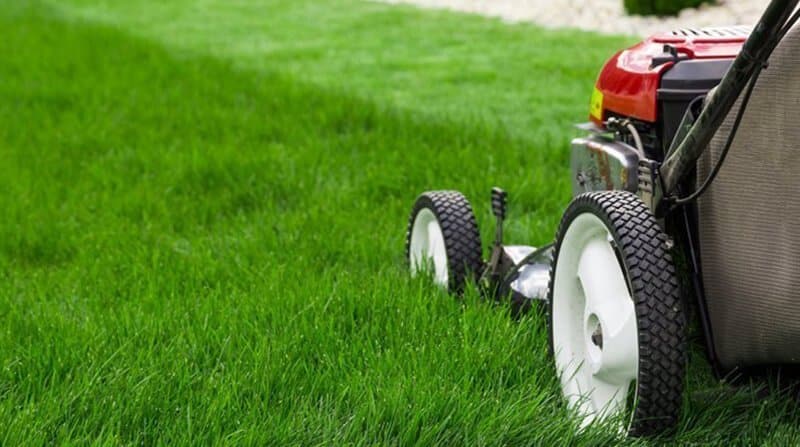In this article, I’m going to explain how to mow the lawn.
Properly.
Mowing is by far and away, the most important part of lawn care. It’s also the most overlooked and misunderstood.
Believe it or not, there’s a lot more to it than just sticking the mower on its lowest setting and pushing it up and down the lawn.
In fact, many people actually damage their lawns as a result of the way they mow.
So, by the end of this article, you’ll know exactly how to mow a lawn the right way.
Three Major Benefits of Mowing a Lawn Correctly
When done correctly, mowing the lawn has three major benefits.
A Better Looking Lawn
Firstly, it creates a better-looking lawn.
See, mowing is like pruning any other plant – it encourages new growth.
As the grass plants produce new stems, shoots and leaves, it creates a thicker, denser sward. Eventually, it’ll get to the point where your lawn looks like a plush green carpet.
Fewer Issues With Weeds, Moss and Disease
As your lawn grows denser and thicker, it creates a barrier that weeds seeds can’t get through. As a result, they’re unable to contact the soil and germinate and become a problem.
It’s the same with moss too.
So much grass means there’s no room for moss to get a foothold and so it’ll be much less of a cause for concern.
As a result of al this, it’ll be much healthier and much more able to fight off disease.
You’ll Save Money
Because mowing properly increases the health and vigour of your lawn and lowers the risk of weeds, moss and disease, you’ll spend less money on weed killer and moss killer as well as lawn feed and fungicides.
Not only does this help your wallet, but it’s also better for the environment.
Grass Cutting Tips and Advice
If you follow these grass cutting tips and advice, you’ll be surprised at how quickly even a fairly tatty lawn will improve in both health and appearance.
Never Cut Off More Than a Third of the Grasses Length
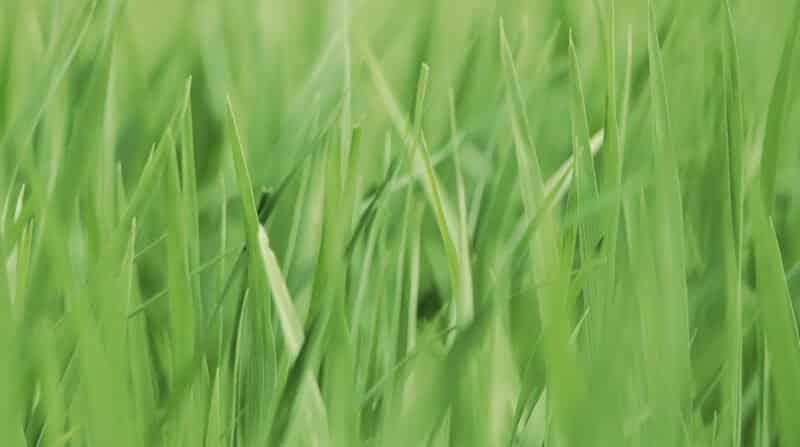
One of the biggest and most common mistakes gardeners make is cutting grass too short.
This is the worst thing you can do.
Removing too much of the grasses leaf takes away vital food stores which it uses in times of stress. For example, in summer when it’s hot and dry.
Grass also uses its leaves to trap sunlight which it uses during photosynthesis and the production of food.
So not only does mowing too short rob the grass of its stored food supply, but you also take away its ability to produce more food.
If you cut the grass too short on a regular basis, you’ll ruin your lawn pretty quickly.
Which raises the question, how high should you cut grass?
There isn’t really a definite answer to that. However, by following the rule of thirds and never cutting off more than a third off the length of the grasses leaf, you’ll never mow too short again.
This is especially important when cutting long grass as you need to bring the height down gradually.
Mow the Lawn Regularly and in Different Directions
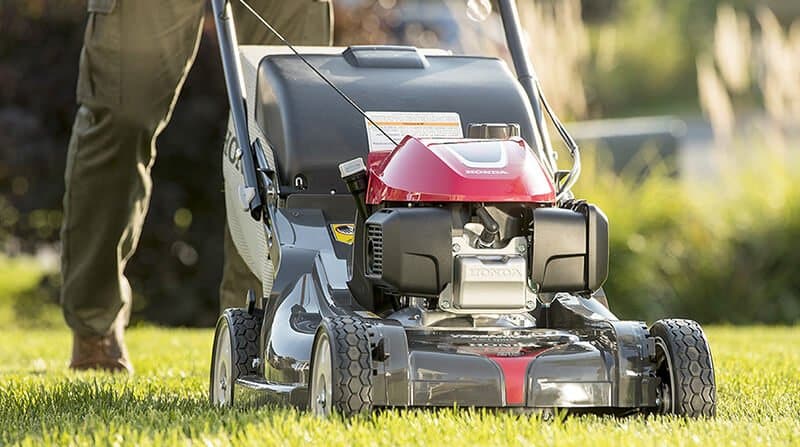
How often you mow will change from season to season.
During spring and autumn when the grass is growing, you should mow at least every 7 days. If you have an ornamental lawn, or want to create a thicker, denser sward, mow every other day.
This will keep encouraging new growth but it also means you’ll never mow too short.
When you cut the grass regularly, you should change the direction in which you mow on a weekly basis. This will control the growth of weed grasses like Annual Meadow Grass and if your lawn mower has wheels, it’ll prevent ‘tramlines’ forming in the turf.
If you don’t like mowing so often, consider investing in a robot lawn mower. They come out and work automatically every day without any input from you.
During the summer, growth will slow down but you should still mow at least every 10 days to keep on top of any weed grasses.
In winter, growth all but stops and many people don’t mow at all. That said, just because it’s winter doesn’t mean you have an untidy lawn. If there is growth, and the weather allows, give the lawn a topping with the mower set to its highest setting.
Avoid Mowing Wet Grass

You should avoid cutting wet grass for a few reasons.
Firstly, it can be dangerous, especially if you use an electric lawn mower. People have been electrocuted and died as a result of mowing a wet lawn.
I’ve also witnessed people slip on wet, sloped lawns while using a lawn mower. If this happens when you’re in charge of a machine with spinning blades, it can be incredibly dangerous.
Wet grass is also hard on your lawn mower.
Moisture can increase the load on your mowers motor. If you use a cordless mower it could drain the battery much quicker than it would normally.
It can cause corrosion and even contaminate the fuel in petrol mowers.
Plus, wet grass sticks to everything and is a nightmare to clean up.
Finally, mowing in the wet is really bad for the grass. Even the best cylinder mowers don’t cut wet grass very cleanly. Rotary mowers are even worse.
Instead of slicing the grass, it tends to tear and damage the grass leaf. This can open the door to fungal diseases.
Wet grass also tends to clump and sit on the lawn. This needs to be picked up to avoid the onset of disease.
Mow at the Right Time of Day
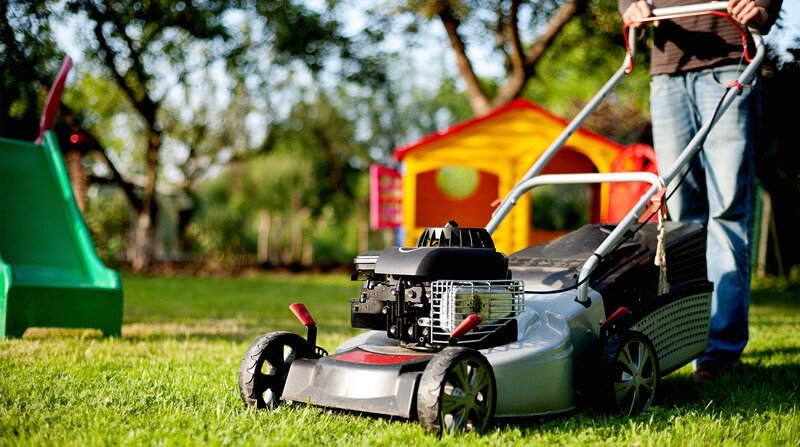
By choosing the best time of day to cut the grass, you’ll get the best results.
Mid-morning, when the morning dew has dried and before the heat of the day sets in is an excellent time to mow.
Late afternoon is another good time. It starts to cool and the grass can recover before the next dew set in.
You should avoid early morning as the dew makes the lawn wet and midday is generally too hot.
Mulch Grass Clippings
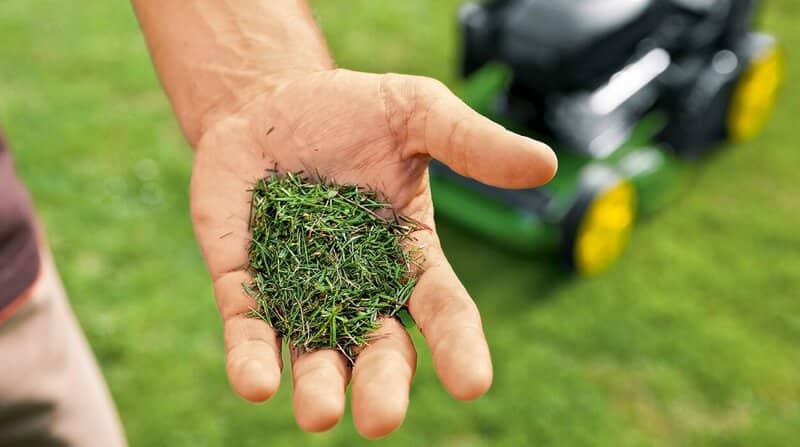
Some lawn mowers can mulch grass clippings. They shred them up into tiny pieces and blow them back into your lawn.
This is very beneficial because those grass clippings contain water and nutrients. When you mulch grass clippings they decompose and all those nutrients go back into the ground where they are consumed by the grasses roots.
As a result, you don’t have to apply fertiliser as often because you’re essentially recycling those nutrients whenever you mulch.
And that saves you money!
The only time mulching isn’t a good idea is if you have weeds like dandelions that produce thousands of seeds. Mulching will spread them all over your lawn.
Stripe Your Lawn For a Big League Look
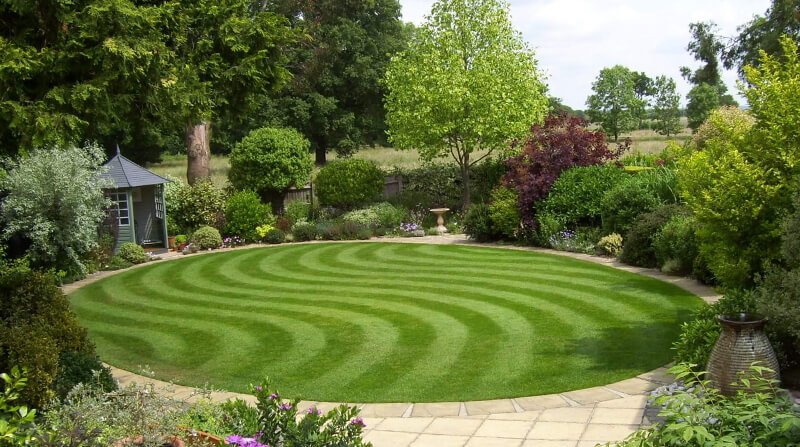
If your lawn mower has a roller on it and you want to create a striped lawn for a big-league look, take care to do it properly.
If the stripes are meant to be straight, make sure they’re straight. Wavy lines which are meant to be straight, look amateurish.
Alternatively, you could get creative and create some incredible stripes and grass patterns.
Trim the Edges of Your Lawn
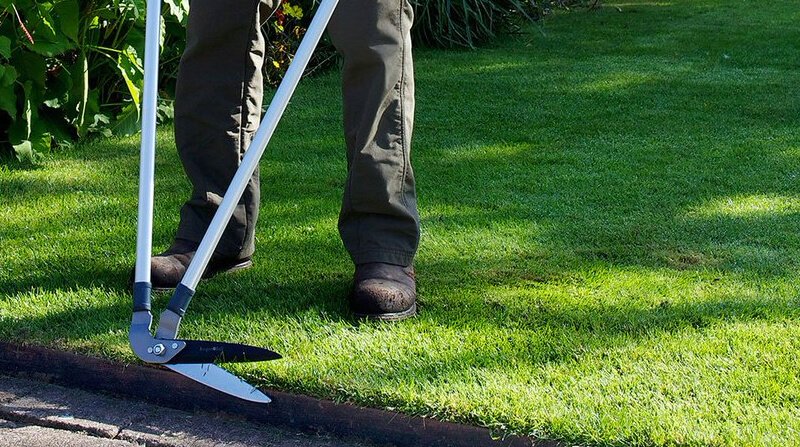
Nothing ruins the look of a well-manicured lawn like untidy edges, whether they’re open edges which meet a planted border or closed edges which meet path, wall, or some kind of lawn edging.
Edging your lawn give is that ‘finished’ look and creates a sense of order to your whole garden.
Every two or three cuts, trim the edges with a pair of edging shears, lawn edger or grass strimmer.
For uneven edges, re-shape them with an edging iron.
Keep Your Lawn Mower Blades Sharp
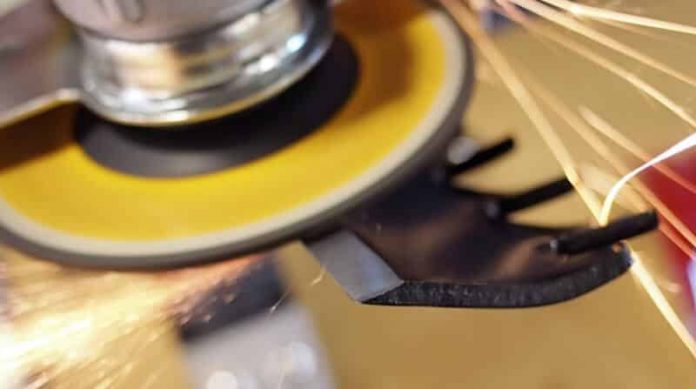
Mowing with dull blades is another mistake many gardeners make.
Blunt blades have a habit of tearing the grass instead of slicing it, especially cylinder mowers. Blunt rotary mowers often fail to cut the grass at all.
This can really damage the grass which opens the door for disease, insect damage and other stresses like drought. You’ll often see the tips of the grass turn brown and if you look closely, they’re jagged instead of straight.
A classic sign the blade needs sharpening.
You can sharpen your blades with a grinder, flat file or alternatively, take it to your local lawn mower shop.
In Conclusion
As you can see, when it comes to how to mow the lawn correctly, there’s more to it than you might first think.
That said, none of this is rocket science.
The two most important grass cutting tips are to mow regularly and never remove more than a third of the length.
If you only abide by these two tips, the health of your lawn will improve immeasurably.
